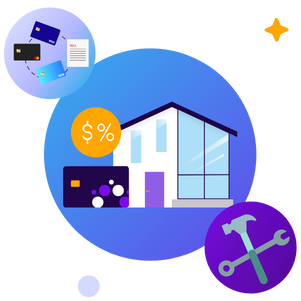April 8, 2024 | by Brian Truong

Tips for a Smooth Retirement Transition & How to Avoid RMD Mistakes
December 20, 2023
By Team Wellby
While healthy retirement savings should allow you to live comfortably, some complicated rules are associated with how and when to withdraw your money as you progress through your golden years. Most important (for tax purposes) is the Required Minimum Distribution (RMD) of tax-deferred accounts like IRAs and 401(k)s.
It’s important to have valuable investment and wealth management resources, and this article will help you understand and navigate your RMD. You’ll learn how to avoid common mistakes and help you make the best decisions for your annual distributions so you can thrive while staying on the right side of your retirement taxes.
What Are RMDs, and Why Do They Matter?
 RMD stands for Required Minimum Distribution. In other words, it’s the minimum amount you can withdraw from a retirement account after age 72 or 73.
RMD stands for Required Minimum Distribution. In other words, it’s the minimum amount you can withdraw from a retirement account after age 72 or 73.
Why do RMDs exist? When you put money into retirement accounts like certain types of IRAs and 401(k)s, it is tax-deferred income. In other words, you save up your before-tax pay - typically with the help of employers. RMDs ensure you eventually pay income tax on that money when you take it as income during your retirement. Starting at age 72 or 73 (recent changes make your birthday important here) you will make minimum withdrawals based on your total savings and predicted lifespan.
However, if you don't take the right minimum amount each year, the amount you didn't take can be subject to 10% - 50% bonus taxes when you finally complete the withdrawals.
RMD Mistakes Are Common, But You Can Avoid Them
The trouble with RMDs is that the amount you should take is not always transparent. It's important to know when to start, how much to take, and all relevant deadlines to get the best value (and least income taxes) on your retirement savings.
Fortunately, with financial experts on your side, avoiding known RMD mistakes is much easier. There are four mistakes to avoid that we're here to help you with today:
- Delaying your first RMD
- Confusing/Combining your 401(k) and IRA rules for RMDs
- Withdrawing the Wrong Amount
- Not Taking RMDs If You Are Still Working at 72/73
1. Avoid Delaying Your First RMD
 If you turned 72 in 2022, you should have taken your first RMD by April 2023. If you turn 72 in 2023, you must take your first RMD by April 2024 (after you turn 73).
If you turned 72 in 2022, you should have taken your first RMD by April 2023. If you turn 72 in 2023, you must take your first RMD by April 2024 (after you turn 73).
The IRS allows you to put off your RMD for 1 year and make your first withdrawal the April after your defining birthday. However, if you delay for a year, your first RMD withdrawal will need to be doubled. This sometimes leads to two large and taxable withdrawals in the same year.
Some retirees fall under a higher tax bracket if they delay and take the double withdrawal in the second year, which can cost more money in the long run and possibly throw off your access to income-related benefits.
This is why it's often recommended not to defer your first year, even if it is slightly convenient. This way, you can avoid these potential issues.
2. Combining 401(k) and IRA RMD Rules
There is more than one type of tax-deferred retirement account with RMD rules. Different retirement accounts have different guidelines and requirements regarding minimum distributions.
IRAs, for example, have an RMD that can be aggregated. This allows you to take a total RMD from a single account after calculating the correct RMD from multiple IRAs - which can really simplify things.
However, 401(k)s require individual RMDs to be withdrawn from each respective account. This can lead to withdrawing the wrong amount from the wrong account and lead to more issues.
Fortunately, you can often roll up 401(k)s from different jobs you’ve held throughout your career into a single account with the best terms. This can help simplify RMDs over the years.
3. Withdrawing the Wrong Amount
IRS calculators are the most useful tools for determining how much to withdraw from each account. All you need to do is give the calculator the right data points to determine how much you need to withdraw each year from your IRAs and 401(k)s. There is an RMD worksheet from the IRS to help you make these calculations.
- List the account balance on December 31 of the previous year
- Note your age and birthday
- Calculate the period of distribution based on IRS life expectancy tables
- Divide the account balance by the period of distribution
- Repeat for every IRA
 It is also commonly recommended that you withdraw slightly more than your calculated RMD. This creates a handy safety margin in case you make a mistake to avoid accidentally withdrawing too little. By going slightly over the minimum, you can prevent any penalties that might come from not withdrawing the minimum from each account.
It is also commonly recommended that you withdraw slightly more than your calculated RMD. This creates a handy safety margin in case you make a mistake to avoid accidentally withdrawing too little. By going slightly over the minimum, you can prevent any penalties that might come from not withdrawing the minimum from each account.
4. Failing to Take an RMD While You're Still Working
Traditional IRAs require you to start pulling RMDs once you reach the age of 73, whether you are still working or not. Many still work at this age with modern healthcare and extended life expectancy. While it may seem silly to start making retirement withdrawals while you are still on the job, avoiding penalties and extra taxes is necessary.
Schedule your first withdrawal at 73 to get the most from your hard-earned retirement savings. Because of how RMDs work, you can always pay taxes on the income and then put the money into a normal bank savings account or invest it for further retirement funds in the future.
Team Wellby is a diverse team that is here to help you find the right financial solutions for your unique goals and budget. Our passion is people: our members, team members, and the communities we serve. We help people find solutions that support their financial well-being, allowing them to dream and prosper.
Related articles you might like
March 11, 2024 | by Chad Carpenter
Top 5 Ways to Improve Your Credit Score
January 30, 2024 | by Team Wellby




